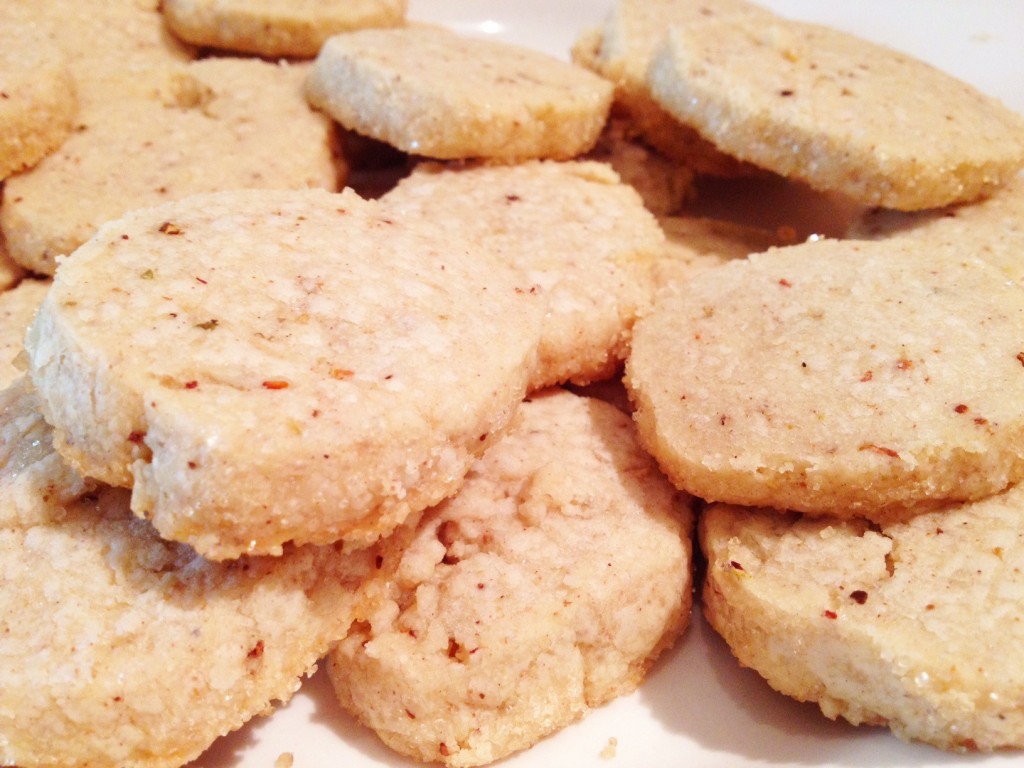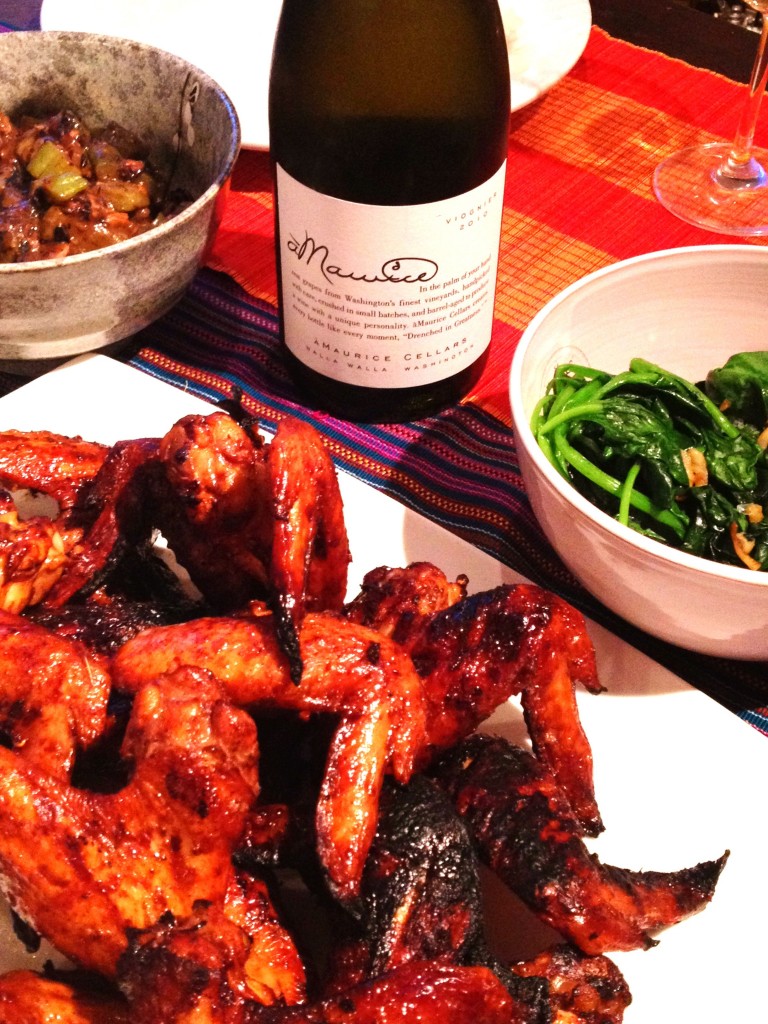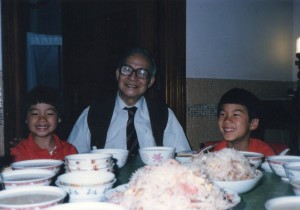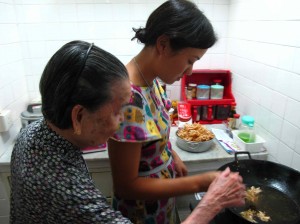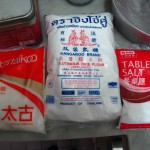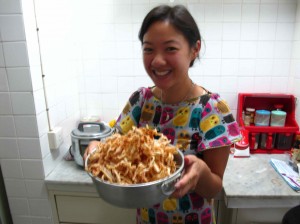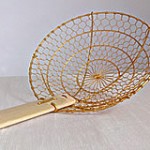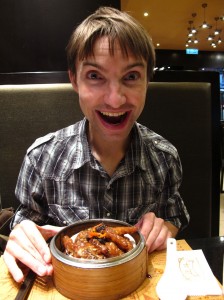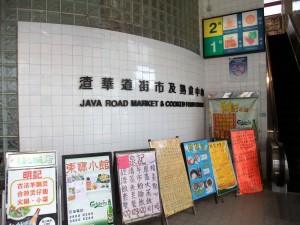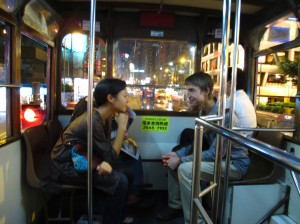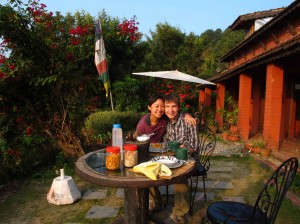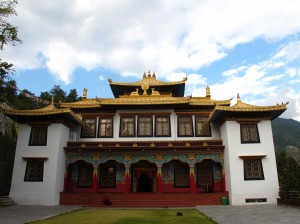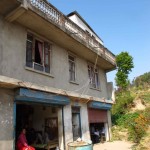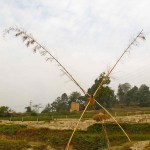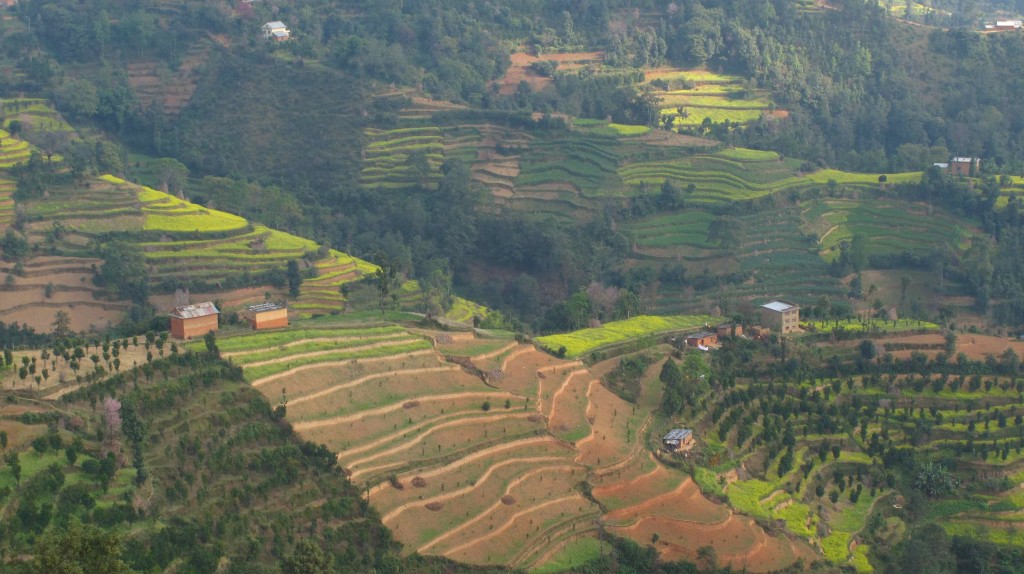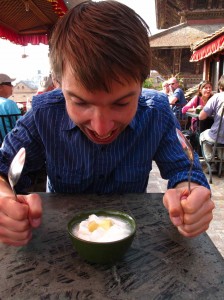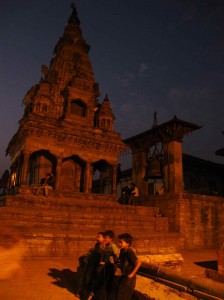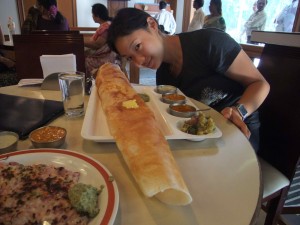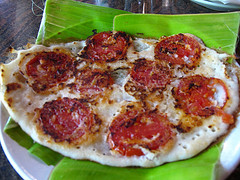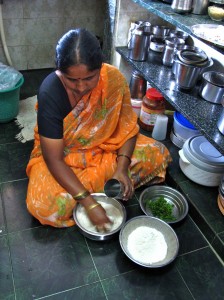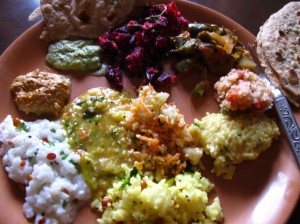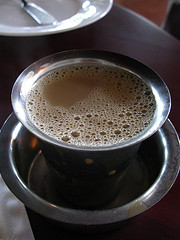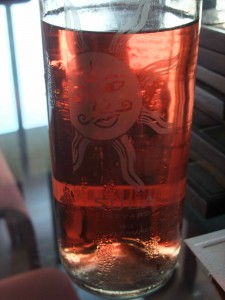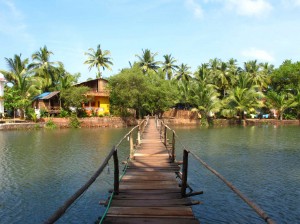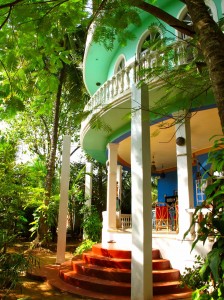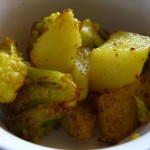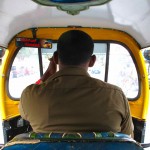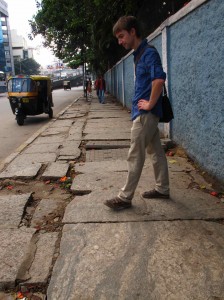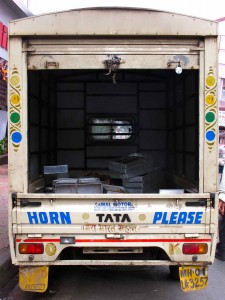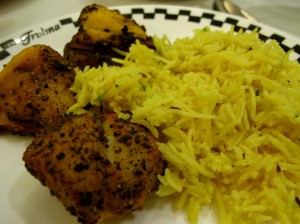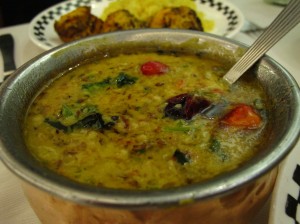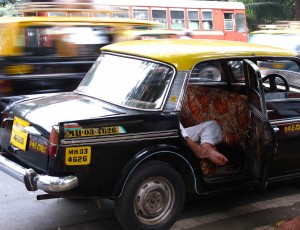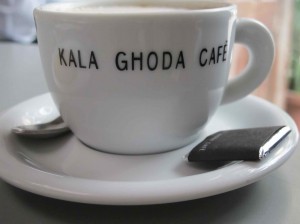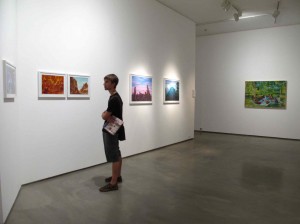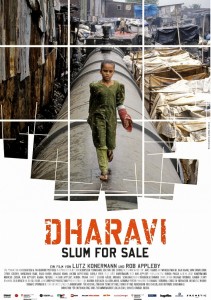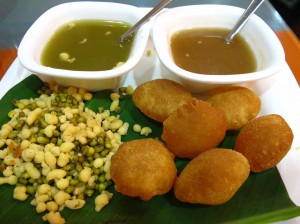Thanks, Mom and Dad, for giving me not one place to call home, but two. Through frequent family trips to Hong Kong, I developed an insatiable desire to move there, a decision most likely made through my stomach. Who could resist congee for breakfast, followed by dim sum and then, wah hai! Is it time for tea already?

MSG not included
A vintage Chinese cookbook that Chris bought for me, Mrs. Ma’s Favorite Chinese Recipes, was dedicated to the original owner in German: “Liebe geht durch den Magen.” Given the “reboot” that our digestive systems experienced in Nepal, I felt extraordinarily happy to land safely in Hong Kong where the best versions of my favorite foods awaited us. This was Chris’ first time to my second home, a place I myself had not returned to for over two years.
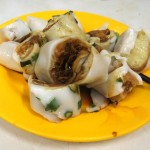
Chris' favorite, zha leung
After our first bites of zha leung (fried crullers wrapped in a steamed rice noodle and doused in sweet soy sauce) at the Java Road Wet Market, I looked at Chris’ beaming visage lit by the fluorescent tube above, and listened to the dull clatter of his chopsticks making contact with the plastic plate before us. “Anything more, little sister?” asked our server as she set down a bowl of piping hot congee. A rush of pure happiness came over me when I replied that we had everything we needed. Love does indeed go through the stomach.
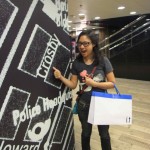
I've found my first apartment in NY in HK!
Although the pace of commerce is faster in Hong Kong than anywhere else I’ve lived in, I was happy to see that many of my favorites were still around. Well, all except for Moon House in Causeway Bay, which served the best black sesame soup mixed with almond soup dessert – the Cantonese version of ebony and ivory living together in perfect harmony. Perhaps they weren’t the current gold standard for the dishes I love, but as a tourist to the Fragrant Port, I’m no longer one to quibble about the strength of one restaurant’s dumplings over another’s noodles. We simply sat back, relaxed, and ate our hearts out for a week.
Herewith is a partial list of my perennial favorites:
The Sing Woo Road Eating Tour
Happy Valley is truly the name of the neighborhood that Sing Woo Road runs through. Supposedly an English surveyor named it as such because he proposed to his girlfriend here and she said yes. Legend has it that the same surveyor proposed to another woman previously and she turned him down. In retaliation, he named the site of this proposal Repulse Bay. Such romantics, those colonialists! There isn’t a close MTR station to Happy Valley so the best thing to do is take a cab from Causeway Bay, which wouldn’t cost more than a few US dollars.
Congee
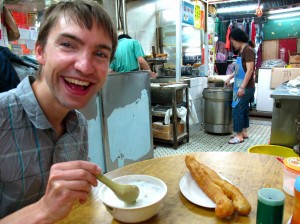
Chris enjoying congee and a doughnut in North Point
“What you want?” barked the manner-less proprietress of Lotus Garden, one of my favorite congee joints basically at the midpoint of Sing Woo Road. She is what passes for local color in these parts. Her attitude, like her endless supply of elastic band Bermuda shorts, has not changed. The congee is superb and every bowl has a juicy braised shiitake mushroom at the bottom. I almost always order the pork and thousand year old egg congee, but this time I ordered sampan congee, which is difficult to find outside Hong Kong. Sampan is the anglicized name for saam ban (three planks), the wooden skiffs one can still see in operation in Aberdeen and other fishing villages around Hong Kong. There isn’t a set recipe as the fisherman who created this dish basically put whatever they could get their hands on into plain congee, but common ingredients include squid, dried jellyfish, roasted peanuts, and savory clusters of crispy fried rice.
Lotus Garden
Room D, G/F, 51A Sing Woo Road
Happy Valley, Hong Kong
Pork Chops and Chive Pastry
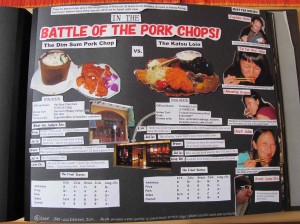
One of my favorite pages from my HK scrapbook
Up the road is Dim Sum, the site of the famed Battle of the Pork Chops held in July 2005 – thank you to the tasters, Julie, Lung-Chi, Grace, Kirk and Julia! We did not have time for a rematch, but next time we’ll have to schedule one with the next generation of judges in tow: Nico, Lily, Griffin and Evelyn! Dim Sum’s crispy spiced pork chop is still darn tasty and served with a side of rice quickly fried with fresh bok choy. I also love their version of chive dumplings, which are unique in that they are baked in a crust with a consistency halfway between wonton wrapper and shortbread, if you can imagine that.
Dim Sum
63 Sing Woo Road
Happy Valley, Hong Kong
Tel: +852 2834 8893
Baked Tapioca Pudding
Still hungry? Head to Lotus Garden’s dessert pocket, which has a variety of individually packaged crepes and glutinous dumplings that you can take to go. If you have time to sit down, definitely try the baked tapioca pudding, which is unparalleled.
Lotus Garden Desserts
61 Sing Woo Road
Happy Valley, Hong Kong
Tel: +852 2891 5569/ 2832 9931
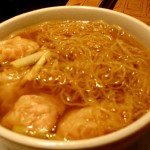
Nom nom nom seems to be the only appropriate caption here
Wonton Noodle Soup
Also in Happy Valley, albeit a block over from Sing Woo Road, is a branch of Tasty Congee & Noodle Wonton Shop, my epicurean uncle’s top pick for wonton noodle soup. The Hong Kong Tourism Board and Michelin Guide have feted Tasty several times over and there is even a branch at the airport so you can have one last bowl of their springy noodles and golf-ball-sized wontons before take off.
Tasty Congee & Noodle Wonton Shop
21 King Kwong Street, Happy Valley, Hong Kong
Tel: +852 2838 3922
www.tasty.com.hk
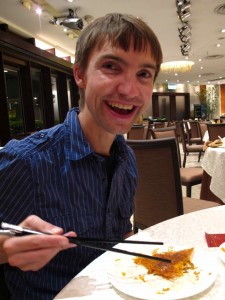
Dinner in Lippo Centre before taking the tram up Victoria Peak
Noodle Pie
Sweet and sour is a flavor combo that many cuisines encompass and thus everyone must agree that it is delicious. If this is so, all future peace accords should be brokered at Lippo Centre Chiu Chow Restaurant. The noodle pie here – quite honestly, I don’t know the true Chinese name, I just describe it to the server every time! – is a pan-fried wonder of noodles served like pizza. Each diner takes a slice and sprinkles it first with sugar and then dissolves the sugar by dripping sweet black vinegar over the top. We have yet to attempt this in our home kitchen this year but if we prove victorious, we will definitely post the recipe!
Lippo Centre Chiu Chow Restaurant
Shop 4, Ground Floor, Lippo Centre, 89 Queensway
Admiralty, Hong Kong
Tel:(852) 2526 1168
MTR exit: Admiralty Station (Exit B)
www.lipporestaurant.com
Shredded Potato Salad
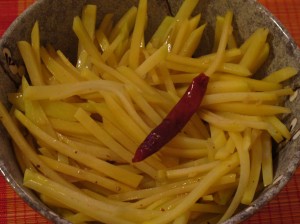
Made for dinner today - a reasonable facsimile of the real thing but I'll keep tweaking it.
The Beijing-style dumplings themselves are fine and filling at these two dueling restaurants that spy on each other from across the street. The real attraction for me is the shredded potato salad (served at both restaurants) that my college roommate, who studied abroad at Beijing Normal University, first introduced me to. It consists of finely julienned strips of potato that are cooked quickly enough to still be crunchy, and then doused with sweet black vinegar. An ingeniously simple combination that I am attempting to recreate as we speak – recipe forthcoming!
Wang Fu
98-102 Wellington Street
Hong Kong
Tel: +852 21218006
MTR: Central, exit C
Dumpling Yuan
69 Wellington Street
Hong Kong
Tel: +852 25259018
MTR: Central, exit C
Egg Tarts
For flaky egg tarts, my favorite place is Honolulu Coffee Shop, which also serves a killer cup of milk tea and pineapple bun. The branch in Central was fortuitously located across the street from my former office so we had many, many desserts from here. For Portuguese egg tarts, we tried Lord Stow’s in the Excelsior Hotel for the first time, which was good. If you can’t make it there, an easy option is going to KFC, which has partnered with Café e Nata, the famed egg tart maker based in Macau. I actually prefer these to the ones at Lord Stow’s.
Honolulu Coffee Shop
G/F, 33 Stanley Street
Central, Hong Kong
MTR: Central, exit C
Lord Stow’s served at EXpresso at the Excelsior Hong Kong
281 Gloucester Road
Causeway Bay, Hong Kong
Tel: +852 2894 8888
MTR: Causeway Bay, exit D4
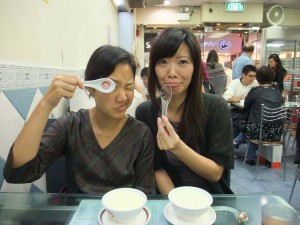
Yee Shun Milk Company for dessert with Bonald. Notice the difference in quality of our spoons
Ginger Milk Pudding
The silky consistency of this dessert immediately takes me back to childhood when my mother would prepare steamed egg custard, carefully lifting up the lid every minute to release excess steam and ensure even cooking. Yee Shun’s cornucopia of steamed desserts is served in the rice bowls they were cooked in and are not too sweet. Another favorite here is the “double skin” milk pudding, an effect achieved by curdling whole milk and letting it cool, which leaves a skin floating on top of the milk. The milk in each bowl is carefully poured out from under the skin. The second skin is created when a liquid mix of egg, sugar and milk is poured into the bowls with the first skin still in it, and then steamed. The Causeway Bay one is very popular, so much so that they were out of the souvenir mugs that I wanted to buy. The cashier said that they would be back in stock in a few weeks, and in the meantime, I could purchase Yee Shun paraphernalia at their Kowloon locations.
Yee Shun Milk Company
G/F, 506 Lockhart Road
Causeway Bay, Hong Kong
Tel: +852 2591-1837
MTR: Causeway Bay, exit C or D4
Other branches:
G/F, 513 Nathan Road
Yau Ma Tei, Kowloon
Tel: +852 2374-5460
G/F, 63 Pilkem Street
Jordan, Kowloon
Tel: +852 2730-2799
G/F, 246-248 Sai Yeung Choi Street South
Mong Kok, Kowloon
Tel: +852 2393-3301
 Mango Chunks and Juice with Coconut Milk
Mango Chunks and Juice with Coconut Milk
This is my favorite drink at the ubiquitous fruit juice and snack shop called Hui Lau Shan. I have been known to slurp one down in less than 10 seconds, brain freeze be damned! The website is in Chinese only but there are a few dozen locations all over Hong Kong. The best thing to do to find the one most convenient to you is to Google “Hui Lau Shan Hong Kong.” Alternatively, on a break from shopping, go to the one on the Shibuya-esque mega crossing in Causeway Bay across from Sogo, which is where this picture was taken.
www.hkhls.com
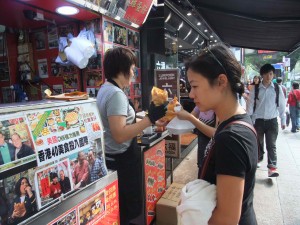
Reading about local celebs who also enjoy egg waffles - they're just like us!
Egg Waffles
These can be found quite readily throughout Hong Kong at street snack stalls, but the one we stumbled upon on Nathan Road happened to be quite famous and has eight locations and counting. Make sure you ask for a fresh one, which will be given to you in a wax paper bag with holes punched out of the sides so the steam can escape. The special manual-flip waffle iron allows for the waffle to be half cake-like and half crispy – the best of both worlds in one bite!
Lee Keung Kee Egg Waffles
78 Nathan Road
Jordan, Kowloon
MTR: Tsim Sha Tsui, exit A2 or B1
